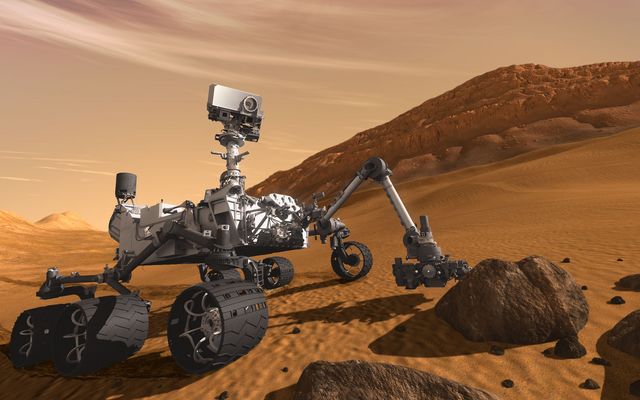NASA’s next Mars mission is set for takeoff. The Mars Science Laboratory (nicknamed, for some insane reason, “Curiosity,” as in what killed the cat) has a launch window that opens tomorrow, November 25, and closes a few weeks from now, on December 18.
This rover is quite a bit bigger than the last set of rovers, Spirit and Opportunity, with a correspondingly more ambitious science mission. But what’s really interesting is the planned landing method: according to the mission website,
The spacecraft will descend on a parachute and then, during the final seconds prior to landing, lower the upright rover on a tether to the surface, much like a sky crane.
That doesn’t sound risky, does it?
It’s also powered by the radioactive decay of plutonium instead of solar panels, so while the power source is more reliable (no dust storms or weather conditions should interfere), it’s also relatively time-definite. Once the plutonium runs out, the mission ends. The science team is coy about the lifespan, calling it only “a full martian year (687 Earth days) or more.” Assuming the rover survives the “sky hook” landing, though, the plutonium-powered mission should be pretty robust, with
significantly greater mobility and operational flexibility, enhanced science payload capability, and exploration of a much larger range of latitudes and altitudes than was possible on previous missions to Mars.
Here is an artist’s conception of the robot:

With a planned arrival on the red planet in August 2012, we won’t have long to wait before we find out whether curiosity will be satisfied, or, well… you know the saying about what happened to the cat!

